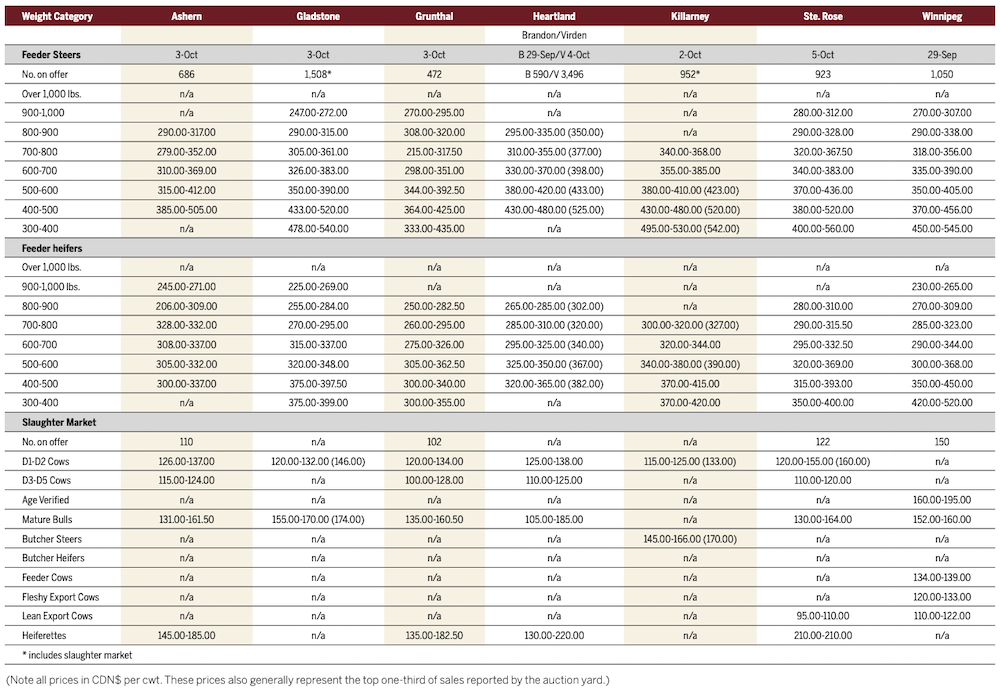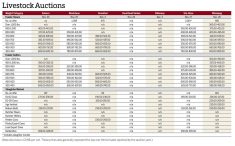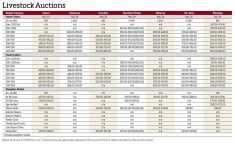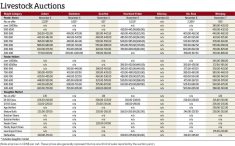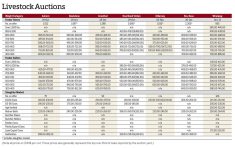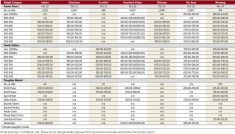High-end prices for feeders were still at record levels for the week ended Oct. 5, but some prices were either steady or lower compared to the previous week.
In the case of Killarney Auction Mart, prices for feeder heifers and slaughter cattle were little changed at its regular sale on Oct. 2. Heavyweight steer prices were higher and those for lighter steers were lower.
Sellers were still welcoming high prices, according to Killarney Auction Mart general manager Allan Munroe.
Read Also
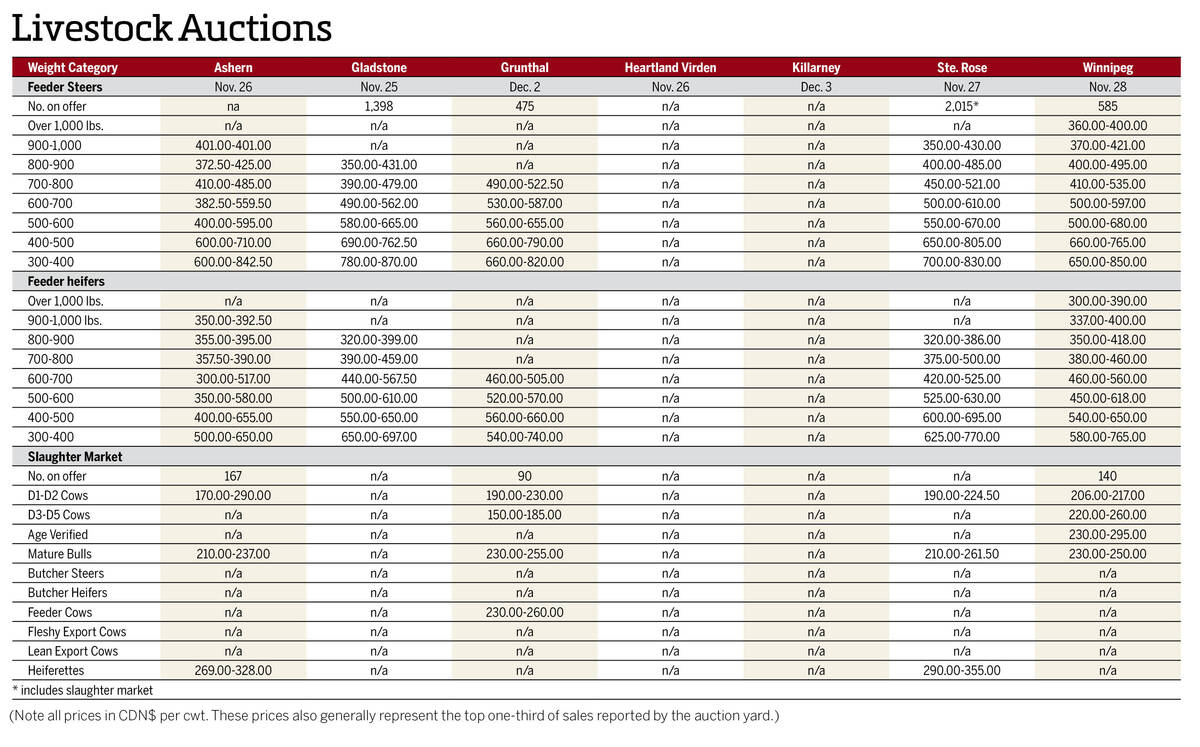
Manitoba cattle prices, Dec. 3
Cattle prices from Manitoba’s major livestock auction marts during the week Nov. 25-Dec. 2, 2025.
“People are genuinely happy when they’re leaving with their cheque,” he said. “Selling always goes a little bit up and down. We’re starting to get a little bit of seasonal pressure on some cows, which we always see at this time of year.”
Prices for slaughter cattle weren’t as high as they’ve been over the past few weeks, he added. Overall, the Oct. 2 sale in Killarney saw 952 cattle go through the rings, compared to 1,214 on Sept. 25.
“We saw a lot of light calves that maybe wouldn’t be coming to market until later on. The numbers are up for most places at this time of year.
“If we get some moisture this week, it’s looking greener than it did most of summer. But a lot of pastures are getting done up and there’s not a big surplus of feed around. So we’re seeing some guys moving a little bit earlier,” Munroe said.
On the Chicago Mercantile Exchange Oct. 5, the December live cattle contract lost US$5.05 per hundredweight from the week before to close at $185.375 after going down to $184.60/cwt. on the same day, its lowest price since Sept. 6.
The November feeder cattle contract dropped $7.375/cwt. from one week earlier to close at $250.30. On Oct. 3, the contract fell below the $250/cwt. mark for the first time since Aug. 18.
Ontario is showing “aggressive” interest in higher-priced cattle, said Munroe, and some yearlings are also going to the United States.
High prices are overshadowing other issues within the industry, including a feed shortage in western Saskatchewan and southern Alberta, as well as the aging base of cattle producers in Western Canada, he added.
“Demographically, a lot of our cattle farmers are getting older. When we’re seeing this much optimism in our industry, some are seeing it as a time to cash out,” Munroe said.
Continued support
Manitoba Beef Producers released a statement congratulating the New Democratic Party and premier-designate Wab Kinew on the provincial election victory on Oct. 3.
“Moving forward, MBP intends to engage with the new government on an array of topics affecting Manitoba’s beef industry such as improvements to business risk management (BRM) programs to ensure beef producers are on a level playing field with other sectors, agricultural Crown lands, water management, recognition for ecosystem services provided through beef production, infrastructure, trade, labour supply and more,” the statement said.
MBP also thanked exiting Premier and Progressive Conservative leader Heather Stefanson, as well as former Agriculture Minister Derek Johnson for their assistance to Manitoba’s beef industry.
“These included the provision of AgriRecovery during the 2021 drought, continued support for business risk programs and beneficial management programs through the various agricultural policy frameworks, funding toward the Livestock Predation Prevention Project, the funding additional of training seats for Manitoba veterinary students, and support for agriculture-related environmental initiatives through the Conservation Trust, among others,” the statement said.


